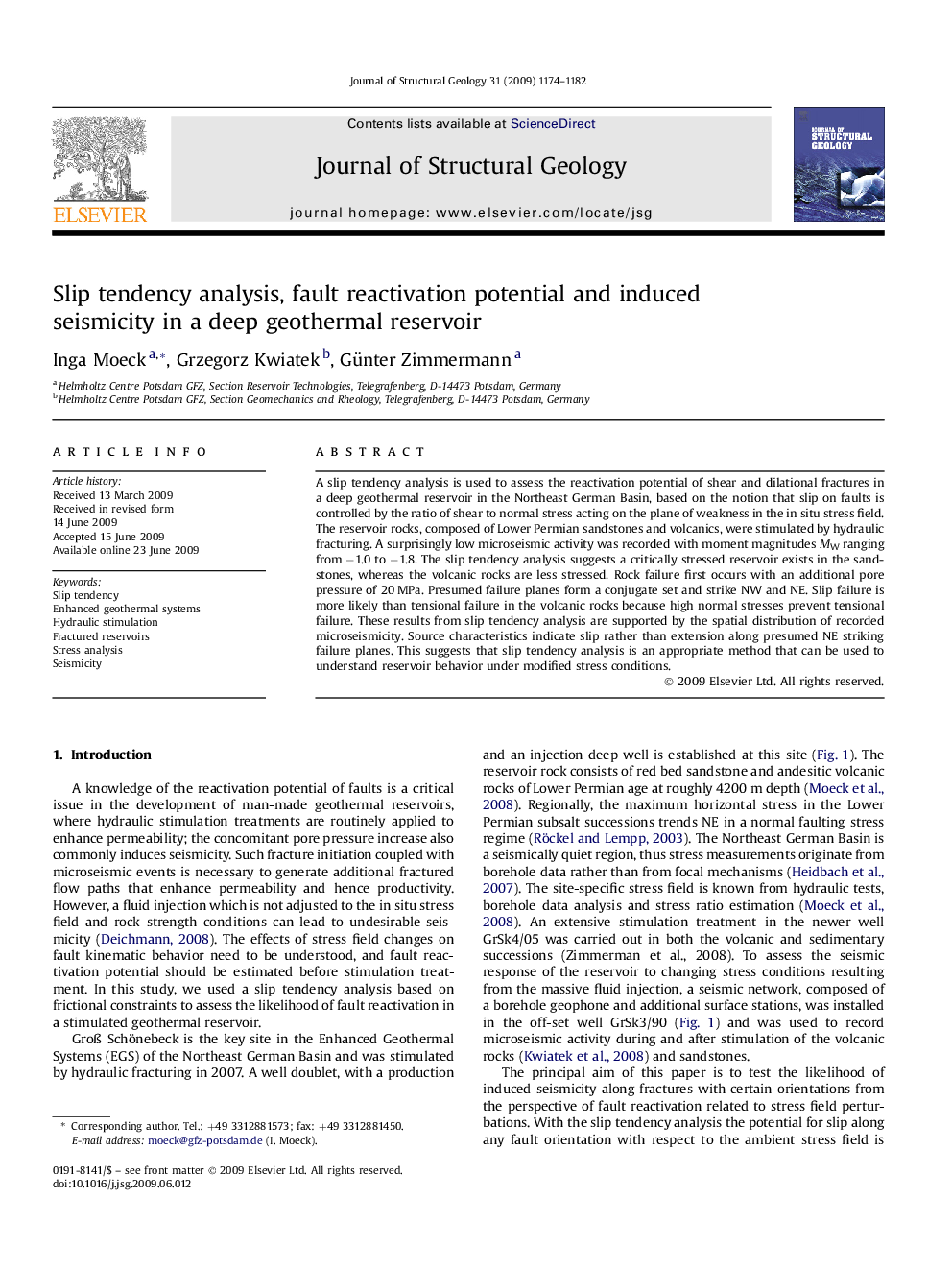| Article ID | Journal | Published Year | Pages | File Type |
|---|---|---|---|---|
| 4733829 | Journal of Structural Geology | 2009 | 9 Pages |
A slip tendency analysis is used to assess the reactivation potential of shear and dilational fractures in a deep geothermal reservoir in the Northeast German Basin, based on the notion that slip on faults is controlled by the ratio of shear to normal stress acting on the plane of weakness in the in situ stress field. The reservoir rocks, composed of Lower Permian sandstones and volcanics, were stimulated by hydraulic fracturing. A surprisingly low microseismic activity was recorded with moment magnitudes MW ranging from −1.0 to −1.8. The slip tendency analysis suggests a critically stressed reservoir exists in the sandstones, whereas the volcanic rocks are less stressed. Rock failure first occurs with an additional pore pressure of 20 MPa. Presumed failure planes form a conjugate set and strike NW and NE. Slip failure is more likely than tensional failure in the volcanic rocks because high normal stresses prevent tensional failure. These results from slip tendency analysis are supported by the spatial distribution of recorded microseismicity. Source characteristics indicate slip rather than extension along presumed NE striking failure planes. This suggests that slip tendency analysis is an appropriate method that can be used to understand reservoir behavior under modified stress conditions.
